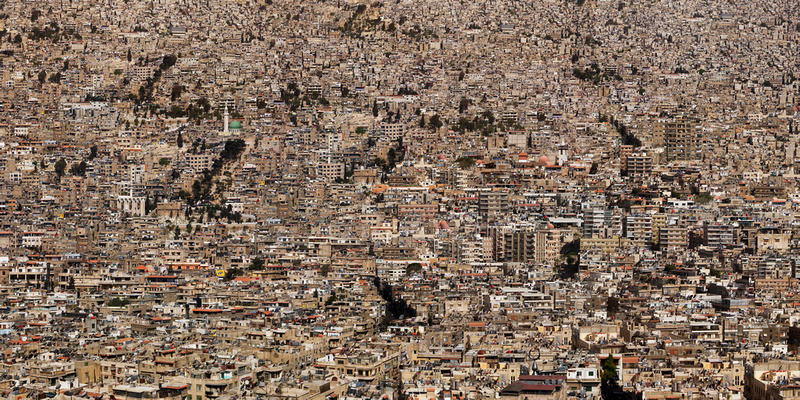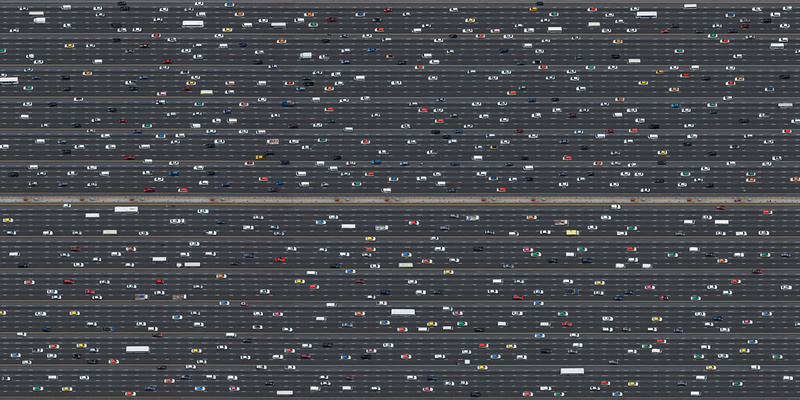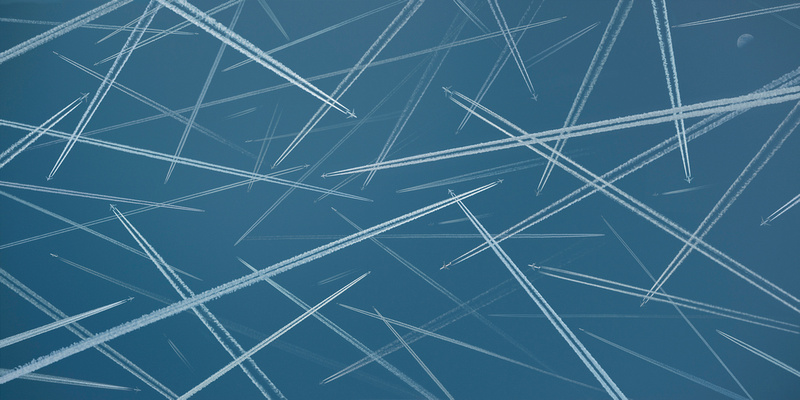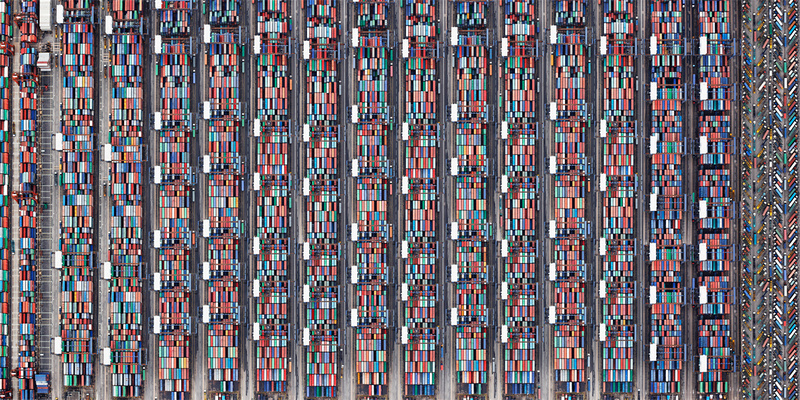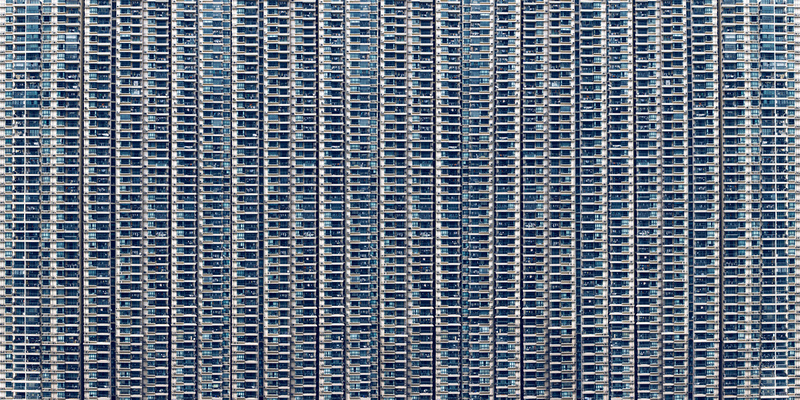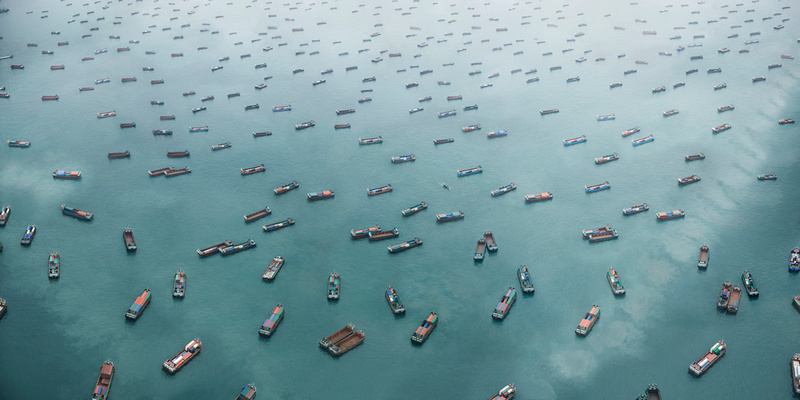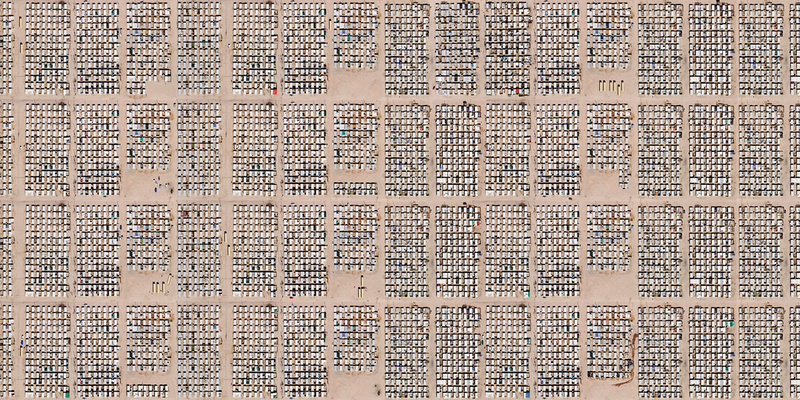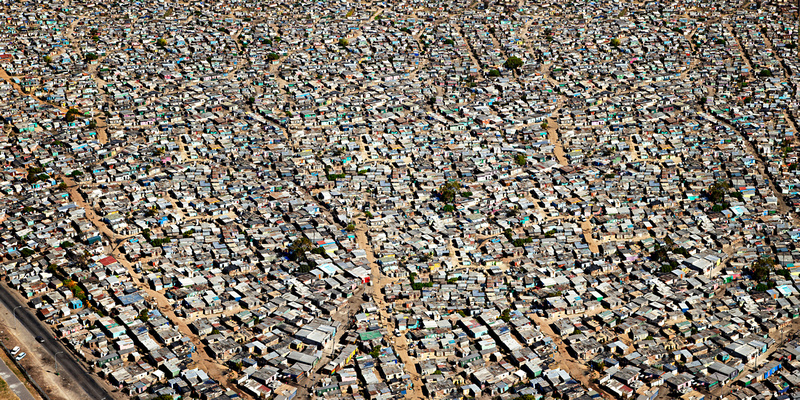Guest Photographer: Marcus LyonWith all the gear-frenzy occasioned by Photokina, it's time to return to the meat of our mission: image making itself. And on the spectrum that runs from image taking (the passive photographic capture of an existing scene) to image making (the management of a scene pre & post-capture), Lyon is far towards the latter. He doesn't merely wander around looking for an interesting or attractive scene: he works in conceptual series, planning the meaning of his work in advance and then researching carefully so as to best find locations that match the brief he has set himself. In this, his genes stretch directly back to the work of Ed Ruscha, an artist whose work heralded the idea of seriality in popular modern photography and went on to influence a variety of practitioners from the Bechers to Gursky and Burtynsky.
Of course the documentary intent is easy to map onto any serial work (possibly a mild confusion between serial and seriality in the critical lexicon?) but in truth it is not always there in significant portion. In Lyon's work, however, it is central. These are conceptual series which start with a perception of some particular aspect of the world and then engage with the pursuit of images which provide the narrative to illustrate that point. Oh, and I should mention that they are beautiful. Gobsmackingly, gorgeously, richly beautiful. And huge, as is the fashion for work in this genre; underneath the abstraction that Lyon uses to draw the viewer in from a distance is a stunning quantity of tiny, perfect detail. The distant image that looks like a constructivist composition is, in fact, an arial view of a shipping container facility. Those pointillist arrays of coloured specks are automobiles, captured whilst hanging from a helicopter. He moves both from the general to the specific conceptually and from the impression to the specific visually and this is the key: the abstractions and the specifics are both vital parts of the narrative. In particular, in Exodus, the series shown here, the narrative is about the relationship between individuals and their increasingly globalised swarms. It is a documentary* about the ways in which individuals relate to their larger and more corporate manifestations, their domestic, social and economic selves represented at a level beyond the tribal and into the scale of the mega-hive, in which their individuality is subsumed and against the flows of which they are powerless. So the macro and the micro representations of human existence are two sides of the same narrative coin, matched by Lyon's visual technique.
This matching of visual method to narrative intent is subtle, sophisticated, and rare. Another rare thing about his work is that he has absolutely no interest in equipment per se. Though clearly technically highly competent (and I know that he wields a 4x5 film camera with the same skill as he handles a digital SLR), if you ask him what camera he uses, he will say 'Canon.' And if you ask which model, he will simply look confused. And yet these images, stitched from multiple frames (even when captured from aircraft) look as if they have been shot on Medium Format Digital rather than 35mm and this is true even when you cross the room and get your nose right up against them.
One last word from me before you hear from the artist himself: Marcus is a man who has travelled the world both widely and deeply, and more often than not with the aim of helping others. Whether with Amnesty International, Photovoice or the Consortium for Street Children, his roots are fundamentally empathic. He may well have photographed the Queen (and more prime ministers than you can shake a stick at) and it is certainly true that he has been nominated for the Pictet, won a sackful of awards and prizes and exhibited everywhere: but at its roots his work is about empathy, not photographic stardom. Exodus IV - Hong Kong China 2010
Biography I'm British, born in 1965 and raised in rural England, before studying both at home and abroad (Leadership at Harvard Business School and Performance Measurement at the Kennedy School of Government). My working life started with Amnesty International in Latin America and there lie the roots of my interest in development and urbanisation. I have been lucky enough to travel to over 90 countries and have used this opportunity to create art that explores the issues surrounding the under classes in the developing world, with a particular focus on street children and manual labour.
In the early 21st Century I moved from exploring the micro to the macro with the large-scale BRIC and Exodus series, exploring themes of urban expansion and migration. If I had to sum up these interests, I would say they explore the edges and inflection points of critical change that encapsulate the relationship between man-made and natural worlds. I am also interested in advocacy for and documentary of disability sport, with which my latest project (shot on 4x5 film at the London 2012 Paralympics) is concerned.
Alongside (and I suppose integral to) my photographic exploration of these themes, I'm a determined 'social entrepreneur' and an active public speaker on development issues. I live in London with my wife and daughter.
Working Aims and Practices
My work draws on a strong sense of social justice, and on a deep need to communicate the stories I have encountered of interactions between humans, nature and the built environment. Turning these into finished work requires a strong degree of both pre-visualisation and logistical planning, so as to maximise the impact of the final image.
My early photography was dominated by the painstaking rigours of large format plate camera work but though I love 'gear' for what it lets me do I am not a 'gear head': for me, the idea is the first domino in a collapsing line that ends with the falling of the last domino, the presentation of the finished work. All the dominos in-between are just means to an end, the right tools for the right job. For the Exodus series, this meant shooting with the light weight and adaptability of 35mm digital, in this case pro-level Canon equipment. The images are shot from helicopters and other high vantage points and then montages made from individual frames to make the final composite images. Each one takes eight weeks or more to research, shoot and build.
The Exodus series has been exhibited extensively and has been represented by the Photographers Gallery in London and the Inception Gallery in Paris. The full body of work and Lyon's acclaimed BRIC series will be the subject of a month long exhibition in Paris during November to coincide with Paris Photo. (www.inceptiongallery.com 3.11.12 - 28.11.12 - 37, rue de Poitou,75003 Paris, France) Lyon has won numerous awards for his work including the B&H Gold Award, Agfa Photograph of the Year, a Prix Pictet nomination, a D&AD Silver nomination and 5 AOP awards In 1990 Lyon founded the Glassworks, an award-winning multi-disciplinary art studio that acts as a gallery, exhibition venue and centre of excellence for commissioned and original artworks.
* It is a documentary of a sort: given that many of the images are composites, the work is a creative rather than factual documentary. It shows what is but at a meta-level rather than a strictly factual one. The next featured photographer in this series will be Nadav Kander
for the critical framework surrounding this series of guest photographer features, please see my earlier essay 'What is Fine Art Photography?' |

